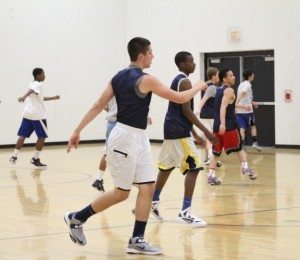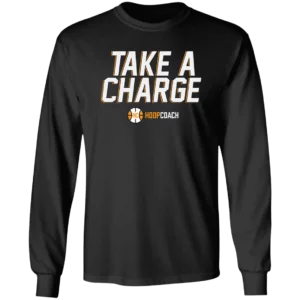 For the states that have already started high school and youth basketball, this article is probably moot for this season. But, those of you in states where tryouts have yet to be held may be able to find a useful thought in the following article, or perhaps even from other readers in follow-up comments.
For the states that have already started high school and youth basketball, this article is probably moot for this season. But, those of you in states where tryouts have yet to be held may be able to find a useful thought in the following article, or perhaps even from other readers in follow-up comments.
Choosing a team isn’t exactly rocket science but the days of an all-powerful coach winging it by having candidates scrimmage for an hour and calling it a day are pretty much over. Back in the day when coaches made cuts, it was rare for anyone, especially parents, to question the decisions. Today, these decisions are questioned regularly-often vociferously.
There are those of you totally immune from politics of any kind or even the possibility of disappointed or angry parents questioning you or staff’s decisions. You are probably free to choose your team(s) any way that you would like. Then there are those of you who will be bombarded by disappointed players and parents. In either case, it is wise to have a plan.
First, let’s examine the qualities which coaches universally hold in high esteem. To begin, giving each candidate a letter or numerical grade in each category isn’t a bad idea. Documenting each player’s performance can make potentially difficult meetings afterwards much easier if one is buttoned up. Depending on how detailed you want to be, you can even grade sub-categories:
*Athletic Ability- (Speed, Quickness, Strength, Vertical, Hands, Feet)
*Skills- (Dribbling, Passing, Pivoting, Shooting, Rebounding)
*Size For Position
*Intangibles
*Potential Role
*Chemistry Factor
*Upside- One quick story in that vein: One season when I was a varsity high school coach, I was overseeing the freshmen team tryouts and when the freshmen coach came to me with the list of those players to make the team that he and his assistant had composed, I approved of the entire list with one exception. I had them keep a gangly 6-3 skinny kid who looked like a crane. All he could really do was run and catch. He certainly wasn’t in the “best” 15 players in that class. As the year went on, he improved and worked himself into a serviceable backup on the freshman team. That summer, his family moved out of state and I didn’t think of him until three years later when I was reading Street and Smith and saw that Norm Sloan at Florida had signed the 6-10 forward to a scholarship. Of course, when I recommended him to be kept as a frosh, I merely thought he had a chance to be a contributing varsity player some day.
The criteria one chooses for tryouts can vary greatly from coach to coach and even from squad to squad. For instance, if the same 6-3 “cranish-looking” kid was trying out for my varsity squad that year as a junior, would I have been as enamored with his “upside”? The answer is probably not-at that same size and that late in his career. Generally, the younger the team, the more important is upside. Potential team role, the intangibles and role in team chemistry are less important in younger teams because those aspects aren’t easy to ferret out in short tryout sessions.
So, what do you actually do at tryout sessions to create the “cauldron” you need to make your evaluations? Actually, a combination of “analytics” and “eye test” evaluations are what scouts need at higher levels and I would suggest to emulate that approach.
When I say “analytics”, I’m simply referring to even the simple individual tests that the esteemed Hubie Brown fostered back in the 1970’s to use at tryouts and summer camps so that players (and parents) could see where they stood in relation to fellow candidates or campers:
*30 Second Right Handed Layup- Standing on the right side of the basket, how many layups can one make in 30 seconds?
*30 Second Left Handed Layup
*30 Second Wall Pass- Standing 7 feet away from a wall, how many times can one pass and catch the ball of the wall in 30 seconds. (You’d be surprised how revealing this can be about athletic ability and basketball skills.)
*Lane sliding-Timing how long it takes each player to slide back and forth across the lane 6 times (there and back is one trip). Start with outside foot on the inside edge of lane.
*Obstacle Course- Create your own obstacle course with cones and have each player navigate it the way you want (right handed, left handed, crossover, roll dribble etc.) and time it.
*Vertical Jump- There really isn’t a better quick way to measure relative athletic ability.
*Timed Suicide (or other extended sprint).
Of course, you can also create your own additional tests to measure anything that you deem important. Now, if you have 50 candidates for 15 spots and Johnny scores #25 or worse in all the tests, you have pretty serious documentation.
Then there are the “eye test” categories and even these can be documented:
*One on One Play- Have two tournaments or ladders- one for smaller players; one for bigger players but play all the way through so that players play more than one game. Play to a low number (maybe 5) and use the 3 dribble rule (the 4th is a turnover). Tape if you’d like. (If Johnny finishes at the bottom of his ladder and scores poorly on his tests, then he needs to kill the next two aspects.)
*3 on 3 Half Court Play- Short games. If time permits, a ladder is recommended so that candidates get more than one game. 3 dribble rule. Absolutely tape.
*5 on 5 Full Court Play- Short games. Ladder and taping games highly recommended.
Tryouts can be a lot of fun and very rewarding-especially if they unearth someone who wasn’t already on one’s radar. Tryouts are for players and while parents sometimes can get in the way, there is no better way for coaches to put their personal stamps on teams than with personnel selection. Coaches like different players for different reasons and that feature should never go away. Being prepared and organized further guarantees that it won’t vanish.



Really good ideas here, Coach. If I were coaching again this year, I would definitely look at using some or all of these. It’s nice to have something concrete that is written down to help when grading and to help be prepared to explain your decisions to kids who get cut, parents, and administration should you need to.